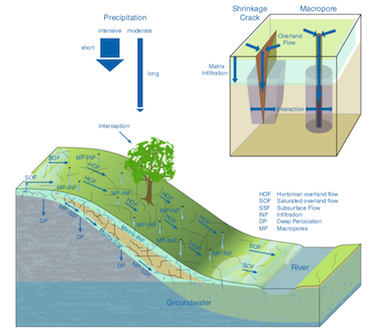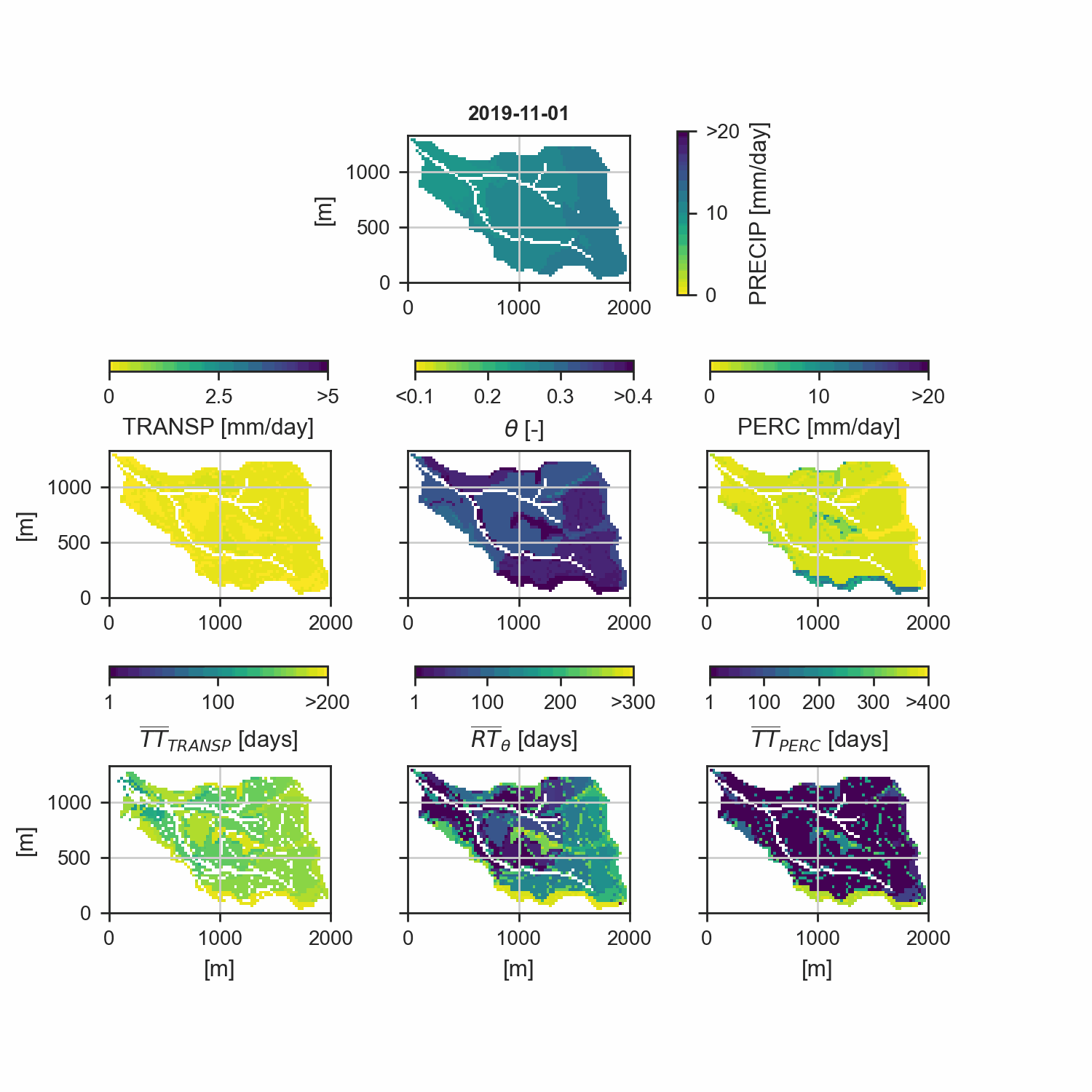Runoff Generation Research - a process-based hydrological toolbox model in Python
RoGeR, Runoff Generation Research, is a process-based hydrological model that can be applied from plot to catchment scale. RoGeR is written in pure Python, which facilitates model setup and model workflows. We want to enable high-performance hydrological modelling with a clear focus on flexibility and usability.
RoGeR supports a NumPy backend for small-scale problems, and a high-performance JAX backend with CPU and GPU support. Parallel computation is available via MPI and supports distributed execution on any number of nodes/CPU cores.
Inspired by Veros.
We strongly recommend to visit our documentation.
(25 square meter resolved simulations of the Eberbaechle catchment, Germany (2019-2022), click for better quality)
RoGeR provides
- grid-based 1D models
- offline solute transport with several StorAge selection (SAS) functions
- solute-specific biogeochemical processes
- implementations of capillary-driven infiltration (Green-Ampt)
- several pre-implemented diagnostics such as averages or collecting values at given time interval, variable time aggregation, travel time distributions and residence time distributions (written to netCDF4 output)
- pre-configured idealized and realistic setups that are ready to run and easy to adapt
- accessibility and extensibility due to high-level programming language Python
To run RoGeR, you need to set up a model --- i.e., specify which settings
and model domain you want to use. This is done by subclassing the
RogerSetup base class in a setup script that is written in Python. A good
place to start is the
SVAT Tutorial:
After setting up your model, all you need to do is call the model setup:
# move into the folder containing the model script
python svat.pyFor more information on using RoGeR, have a look at our documentation.
Contributions to RoGeR are always welcome, no matter if you spotted an inaccuracy in the documentation, wrote a new setup, fixed a bug, or even extended RoGeR' core mechanics. There are 2 ways to contribute:
- If you want to report a bug or request a missing feature, please open an issue. If you are reporting a bug, make sure to include all relevant information for reproducing it (ideally through a minimal code sample).
- If you want to fix the issue yourself, or wrote an extension for Roger - great! You are welcome to submit your code for review by committing it to a repository and opening a pull request. However, before you do so, please check the contribution guide for some tips on testing and benchmarking, and to make sure that your modifications adhere with our style policies. Most importantly, please ensure that you follow the PEP8 guidelines, use meaningful variable names, and document your code using Google-style docstrings.
If you use Roger in scientific work, please consider citing the following publication:
@article{
title = {Roger v3.0.3 – a process-based hydrologic toolbox model in {Python}},
volume = {...},
doi = {https://doi.org/10.5194/gmd-2023-118},
journal = {Geosci. Model Dev.},
author = {Schwemmle, Robin, and Leistert, Hannes, and Weiler, Markus},
year = {2023},
pages = {...},
}Or have a look at our documentation for more publications involving Roger.
- implement runoff and channel routing (e.g. kinematic wave or hydraulic approach)
- implement distributed model with run-on infiltration
- use coarser spatial and temporal resolution for computation of groundwater-related processes
- implement baseflow in the groundwater routine. requires surface water depth.
- implement surface runoff generation for gravity-driven infiltration
- implement gravity-driven infiltration and percolation and include it into the transport routine
- implement time-variant sowing and harvesting of crops
This software can be distributed freely under the MIT license. Please read the LICENSE for further information. © 2024, Robin Schwemmle (robin.schwemmle@hydrology.uni-freiburg.de)

